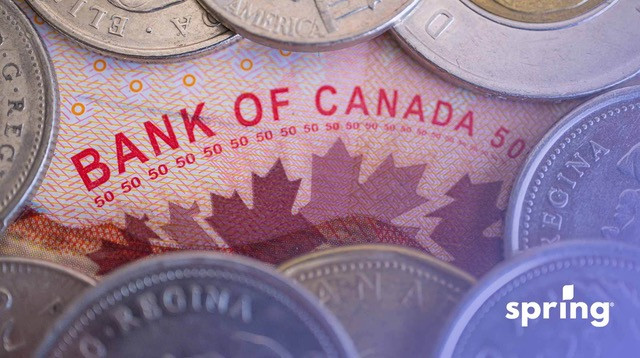Throughout the country, there are many different income levels, and a lot of these are based on location. In Throughout the country, there are many different income levels, and a lot of these are based on location. In every portion of the country, there are different opportunities and fluctuating costs of living. That said, we’re going to take a look at the income of those in the top 1%.
Who exactly are the top 1%? Well, those are the people who make an average annual income of $315,911 per year. From there, you have the top 2%, 5%, and 10%.
Income Percentiles in Canada
In Canada, there is a wide variety of income earners. In fact, Canadian income earners are broken down into different percentiles based on their income. Let’s take a look at some of these percentiles. These are household income percentiles and how they reflect on income distribution. We’ll also take a look at what the income gap looks like in each percentile.
Top 0.1%
The top 0.1% of earners in Canada earn upwards of $1 million annually. These are people who are not only considered to be upper class, but some may even classify them as Canada’s richest people. Income earners in this percentile are only a small percentage of Canadians.
People in this income group often have more than one source of income. Their total income consists of investment income as well as employment income. Not only do they usually have the highest average income, but they also tend to have the highest average dividend income along with their investment returns.
Top 1%
While the average income for the top 1% of earners is $500,000 annually, the threshold income is much lower at $315,911 annually. Those who are considered to be part of the top 1% are also considered to be upper class. There are quite a few career paths in Canada that can lead you to make an income of those in the 1%.
Top 2%
As of the end of 2022, in order to be in the top 2% of income earners, you need to earn a minimum of $190,000 per year. This would mean you would fall into the category of upper-middle class. Many careers that earn incomes of those in the top 1% are also found for those in the top 2%.
Top 5%
The threshold amount for those who are in the top 5% is $162,210 annually. Those who fall into the top 5% category are also part of the upper middle class. They earn slightly more than the top 10%, who aren’t that much above the average Canadian.
When keeping this number in mind, though, it’s important to remember that this is gross income. It’s not the net amount that you actually take home. That varies based on which province you live in, since your provincial income tax paid will differ. Federal rates are Canada-wide.
Top 10%
The top 10% percent of income earners are those who are considered to be upper middle class as well. The threshold amount for the top 10% is $125,945. This amount is only slightly higher than the top threshold for middle-class income, which is $106,717.
Other Income Percentiles in Canada
The income percentiles we discussed above are of those who are top-income earners. That said, the average Canadian income doesn’t fit into these categories. A good majority of Canadians actually fit into the middle-class category, which includes incomes from $57,375 to $114,750 annually.
Canadian incomes that fit into the middle-class category, as well as those that are considered lower class, can be found in the remaining percentiles. These percentiles are:
- 25%, which has an income of $81,184
- 50%, which has an annual income of $46,151
- 75%, which has an annual income of $22,456
What’s important to remember about these percentiles is that it doesn’t mean 50% of the population only earns $46,151. It means that 50% of people earn more than $46,151 while 50% earn less than that amount.
Keep in mind that these numbers aren’t just based on your yearly salary; they also include all other taxable income.
Top 1% Income by Province
While there is a threshold amount that you need to earn in Canada to be considered part of the top 1%, the actual average will be different based on where you live. Let’s take a look at the average amount the top 1% in Canada earn per province.
| Province | Top 1% Income Earners, Median Income |
| British Columbia | $546,100 |
| Alberta | $495,300 |
| Saskatchewan | $449,700 |
| Manitoba | $472,900 |
| Ontario | $534,800 |
| Quebec | $482,300 |
| Nova Scotia | $434,900 |
| New Brunswick | $457,900 |
| Prince Edward Island | $386,500 |
| Newfoundland and Labrador | $406,100 |
| Yukon | $357,100 |
| Nunavut | $357,100 |
| Northwest Territories | $357,100 |
As you can see, British Columbia is the highest if we go by province. These numbers could be different if we break them down even further into individual cities and rural areas.
Top 1% and Taxes
When it comes to taxes, what you pay is based on what you earn. Therefore, the more that you earn, the more you pay in taxes. Let’s take a look at the tax rates in Canada.
In Canada, everyone pays the same tax rates on their tax return. On the first $57,375 you earn, the tax rate is 15%. Any portion above that amount up to $$114,7150 pays a tax rate of 20.5%. For amounts from $114,750 to $177,882, the tax rate is 26%, and from $177,882 to $253,414, the tax rate is 29%. Any income earned above $253,414 is charged a tax rate of 33%.
Those who are in the top 1% of income earners will pay the most taxes. That said, though, most Canadians earn an income that doesn’t qualify to be in the top 1%. In fact, if you look at Canada’s income percentiles, those who are in the top 20% of income earners actually pay the majority of income taxes every year. The top 1 percent are just a small part of this.
Provincial Tax Rates
The tax rates listed above are federal tax rates. Based on where you live, you’ll also have to pay a specified provincial tax rate, whether you’re part of the top income groups or not. When you do your tax return, you’ll fill out provincial income tax forms for your provincial income taxes.
| Province/Territory | Tax Rate |
| British Columbia | 5.06% for amounts up to $49,2797. 7% for amounts between $49,279.01 and $98,560 10.4% for amounts between $98,560.01 and $113,158 12.29% for amounts between $113,158.01 and $137,407 14.7% for amounts between $137,407.01 and $186,306 16.8% for amounts between $186,306.01 and $259,829 20.5% on taxable income above $259,829 |
| Alberta | 8% for amounts up to $60,0010% for amounts between $60,000.01 and $151,243 12% for amounts between $151,243.01-$181,481 13% for amounts between $181,481,01-$241,974 14% for amounts between $241,974.01-$362,961 15% on taxable income above $362,961 |
| Saskatchewan | 10.5% for amounts up to $53,463 of taxable income 12.5% for amounts between $53,463 – $152,750 14.5% on the amount over $152,750 |
| Manitoba | 10.8% for amounts up to $47,000 of taxable income 12.75% for amounts between $47,000 – $100,000 17.4% on any taxable income over $100,000 |
| Ontario | 5.05% for amounts up to $52,886 of taxable income 9.15% for amounts between $52,886 – $105,775 11.16% for amounts between $105,775- $150,000 12.16% for amounts between $150,000 – $220,000 13.16% on any taxable income over $220,000 |
| Quebec | 15% for amounts up to $53,225 of taxable income 20% for amounts between $53,225 and $106,495 24% for amounts between $106,495 – $129,590 25.75% on any taxable income over $129,590 |
| Nova Scotia | 8.79% for amounts up to $30,507 of taxable income 14.95% for amounts between $30,507 – $61,015 16.67% for amounts between $61,015 – $95,883 17.5% for amounts between $95,883 – $154,650 21% on any taxable income over $154,650 |
| New Brunswick | 9.4% for amounts up to $51,306 of taxable income 14% for amounts between $51,306 – $102,614 16% for amounts between $102,614- $190,060 19.5% on any taxable income over $190,060 |
| Prince Edward Island | 9.5% for amounts up to $33,328 of taxable income 13.47% for amounts between $33,328 – $64,696 16.6% for amounts between $64,696 and 105,000 17.62% for amounts between $105,000 and $140,000 19% for amounts over $140,000 |
| Newfoundland and Labrador | 8.7% for amounts up to $44,192 of taxable income 14.5% for amounts between $44,192 – $88,382 15.8% for amounts between $88,382 – $157,792 17.8% for amounts between $157,792 – $220,910 19.8% for amounts between $220,910 – $282,214 20.8% for amounts between $564,42921.3% for amounts between $564,429- $1,128,858 21.8% on any taxable income over $1,128,858 |
| Yukon | 6.4% for amounts up to $57,375 of taxable income 9% for amounts between $57,375 – $114,750 10.9% for amounts between $114,750 – $177,882 12.8% for amounts between $177,882 and $500,000 15% on any taxable income over $500,000 |
| Nunavut | 4% for amounts up to $55,707 of taxable income 7% for amounts between $54,707 – $109,413 9% for amounts between $109,413 – $177,881 11.5% on the amount over $177,881 |
| Northwest Territories | 5.9% up to $51,964 of taxable income 8.6% between $51,964 and $103,930 12.2% between $103,930 and $168,967 14.05% on any taxable income over $168,967 |
When you take into account the taxes you need to pay, you’d factor in the provincial rates as well as the federal rates. The nice thing is that the tax rates are based on your total income, not your total wealth. Your net worth is not a factor when filing your taxes.
It is important to know what your taxable income consists of. Spousal support payments, as well as other types of support income, can be considered as taxable income. Refundable tax credits and other write-offs can help you reduce this tax burden.
Gender and the Top 1%
Now that we’ve started breaking down 1% income earners throughout the country, is there a difference based on gender? Well, in Canada, the average salary for a male in the top 1% is $534,000, while the average for a female in the top 1% is $450,400.
In fact, only 25% of all 1% of Canadian tax filers are female, while the other 75% are male. While we don’t know the types of income each person earns to get these numbers, we can see that the numbers do reflect income inequality.
Average Canadian Income
While we’ve already mentioned that the top earners in the 1% don’t reflect the national average. That said, how much do they actually differ? The average Canadian household income (including those married and those in a common law relationship) is $75,000, and the average Canadian single income is around $70,000.
Both of these are considered a good salary. This is significantly below the 1% income threshold value, but it’s still considered a very livable wage. This means that these families make enough to pay their bills and have a disposable income.
When we look at the average income in Canada, a set number of $70,000 annually is pretty broad. Let’s take a look at the average income based on age.
| Age Bracket | Average Individual Income |
| 16- 24 | $17,300 |
| 25-34 | $46,900 |
| 35-44 | $63,700 |
| 45-54 | $66,700 |
| 55-64 | $54,660 |
These are the latest numbers according to Statistics Canada and census families. It’s important to know, though, that those who have a University degree tend to have significantly higher salaries than those who don’t. Most people who are just entering the workforce don’t start out with a high income.
This isn’t just reflected in the average salary by age group; it’s also reflected by the fact that the highest-paying jobs in Canada are for medical professionals. That said, the time period you’ve been in your position will also be reflected in your annual income.
Household Income in Canada
While the average overall household income in Canada is $75,000, this can vary based on age group. For people aged between 25 and 34, the average household income is $97,950. For those between the ages of 45 and 54, the average household income is $147,220.
It’s important to keep in mind, though, that this is just the average and based on couples. It also varies from year to year. However, it makes sense that the number rises with age since the more experience you have, the more money you’re likely to make.
Average Net Worth
When we’re discussing the income of one percent of earners, it’s important that this and net worth are very different. The typical rule of thumb is that the older you are, the higher your net worth is. According to Stats Canada, research shows:
- Those under 35 have a median net worth of $48,800
- Those ages 35-44 have a median net worth of $243,400
- Those ages 45-54 have a median net worth of $521.100
- Those ages 55-64 have a median net worth of $690,000
- Those ages 64 and up have a median net worth of $543,200
When you think about net worth though, we are talking about your total wealth and total assets. This is different from your yearly income, so you see the net worth gradually increasing with age.
Ways to Join the Top 1%
Building more wealth in Canada is about more than just having a well-paying career to earn more money through your annual salary. Some of the best-paying careers in Canada are in the medical field. Those who work in tech, law, or finance also have higher-paying incomes. However, you can also start your own business to control what you earn.
Those who are in the top 1% of earners don’t just work hard; they also invest. Having a diverse investment portfolio you keep up to date on and regularly invest in is one of the best ways to increase your income. Not only does the money grow behind the scenes, but the longer you invest, the longer you can take advantage of compound interest. Many who invest also earn dividend income, which can be earned throughout the year, as well as capital gains.
Lastly, avoiding debt and minimizing your expenses are other great ways to contribute to your overall wealth. This reduces your cost of interest and allows you to put more of your hard-earned money into your bank account, allowing you to save wisely. Plus, when you start investing, you can reduce your effective tax rates, depending on where you choose to invest.









